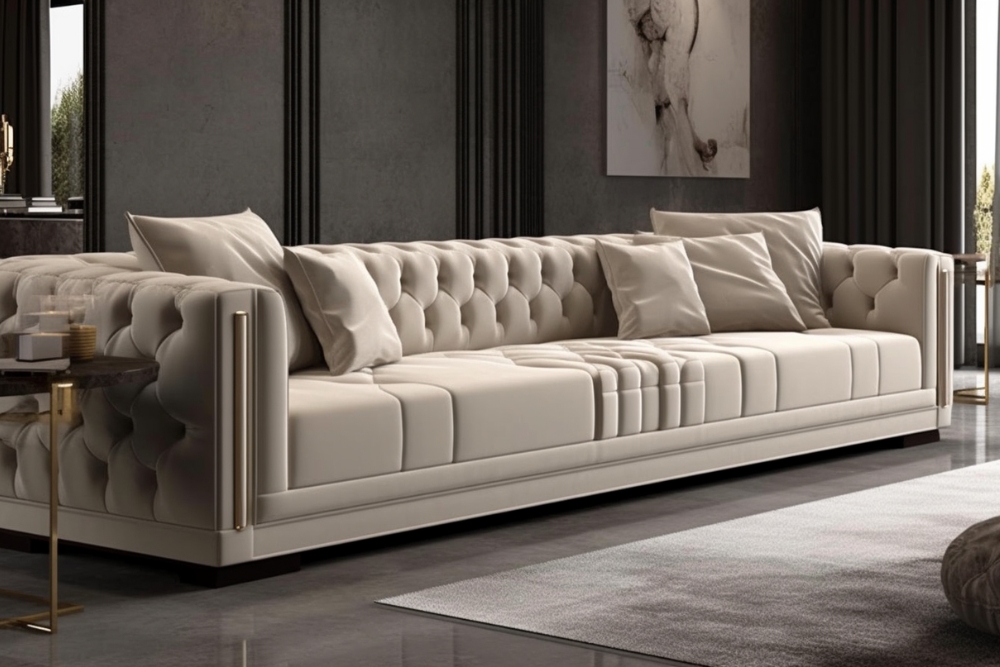Choosing the Perfect Sofa or Couch for Your Living Room
Picking the right sofa or couch shapes the comfort and style of your living room. This guide walks you through sofa types—from loveseats and sectionals to sleeper and modular designs—plus practical advice on sizing, materials, construction, pricing, and upkeep so you can make a confident, lasting choice.

A sofa is more than seating: it anchors your living room visually and functionally. Choosing the right couch means balancing scale, comfort, durability, and style so the piece performs well for daily life and complements your decor. Below is a practical guide to the most common sofa types, what to consider before you buy, how sofas are built, pricing expectations, and maintenance tips to keep your investment looking and feeling great.
Types of sofas and where they work best
Sofas come in many shapes and sizes to fit different rooms and lifestyles. Knowing the strengths of each type helps you match a model to your needs:
- Traditional sofa: Usually seats three, with arms and back cushions. A reliable choice for most living rooms and a good balance of comfort and formality.
- Loveseat: Compact seating for two. Ideal for small spaces, apartments, or as a companion piece to a larger sofa.
- Sectional: Composed of two or more connected pieces, sectionals provide generous seating and flexible layouts. They’re great for families, open-plan rooms, or media spaces.
- Chaise sectional: Combines standard seating with an extended chaise lounge for reclining. Excellent for casual lounging and comfort.
- Sleeper sofa: Converts to a bed, offering a space-saving solution for overnight guests.
- Modular sofas: Individual sections can be rearranged, making them a smart choice if you anticipate moving or changing room layouts.
Each style serves different priorities—choose based on room size, how many people you need to seat, and whether you want multi-use functionality (like sleeping or flexible layouts).
Sizing, layout, and lifestyle considerations
Measure carefully before shopping. Note the room’s dimensions, the scale of other furniture, and the paths people will walk through. Record doorway, stair, and hallway widths to ensure the sofa can be delivered into the space.
Think about how you’ll use the sofa. Do you entertain frequently, or is it mostly for family movie nights? Households with children or pets should favor durable, easy-to-clean fabrics and stain-resistant finishes. If you prioritize a luxe look and longevity, leather or high-end woven fabrics may be worth the investment. Also consider cushion firmness and seat depth: deeper seats are cozier for lounging, while firmer cushions often support longer sitting sessions.
Construction and materials that affect comfort and lifespan
The internal build of a sofa impacts comfort and durability as much as outward appearance.
- Frames: Kiln-dried hardwood is the gold standard for longevity; engineered woods and metal frames can be good alternatives depending on construction quality.
- Springs and support: Look for sinuous (S-shaped) springs, eight-way hand-tied springs, or webbing with reinforced support. These systems help cushions maintain their shape and comfort over time.
- Cushions: Options range from high-density foam for firmer, lower-maintenance seats to feather-and-down blends that deliver plush comfort but require more upkeep. Many sofas use foam cores wrapped in down alternatives to balance support with softness.
- Upholstery: Natural fibers like cotton and linen offer breathability and texture but can stain more easily. Synthetics such as polyester, microfiber, and performance fabrics provide stain resistance and durability. Leather is durable and ages attractively but needs conditioning to prevent drying.
Ask for details on construction and materials when comparing models—quality components often justify a higher price through longer service life.
Popular sectional layouts and why they matter
Sectionals adapt to room shape and seating needs. Common configurations include:
- L-shaped: Efficient in corners and open-plan spaces; offers a defined seating area without overwhelming a room.
- U-shaped: Creates an intimate seating nook ideal for conversation and large gatherings.
- Chaise-equipped: Combines conventional seating with a lounge element for relaxation.
- Modular/reversible units: Allow reconfiguration to suit new spaces or changing preferences. These are particularly useful if you move frequently or like to redesign.
Choosing the right layout depends on how you want traffic to flow and whether you want the sofa to divide an open space or sit against a wall.
Budget expectations
| Sofa Type | Price Range | Key Features |
|---|---|---|
| Basic Sofa | $500 - $1,500 | Standard construction, entry-level fabrics |
| Mid-Range Sofa | $1,500 - $3,000 | Superior materials, more style and comfort options |
| Luxury Sofa | $3,000 - $10,000+ | Premium frames, designer fabrics, custom options |
| Sectional | $1,200 - $5,000 | Multiple pieces, modular or fixed configurations |
Prices, rates, or cost estimates mentioned in this article are based on the latest available information but may change over time. Independent research is advised before making financial decisions.
Care and maintenance to extend the life of your sofa
Regular upkeep will keep your sofa looking fresh and performing well:
- Vacuum cushions and crevices weekly to remove dust and debris.
- Blot spills immediately; follow the upholstery manufacturer’s recommended cleaning method to avoid setting stains.
- Rotate and flip removable cushions periodically to promote even wear.
- Consider professional cleaning every 12 to 18 months for fabric upholstery; leather benefits from periodic conditioning.
- Use protective measures like throws, washable covers, or fabric protectors in high-use areas or if you have pets.
Final tips before you buy
Bring home fabric swatches or order samples to see how materials look under your room’s lighting. Test sofas in-store when possible—sit, recline, and assess cushion resilience and seat height. Verify delivery and return policies, and always measure doorways and stairwells before ordering.
A well-chosen sofa combines proportion, construction quality, and appropriate upholstery for your lifestyle. By planning carefully—measuring your room, prioritizing durability and comfort, and balancing budget with quality—you’ll select a couch that enhances your living space for years to come.






